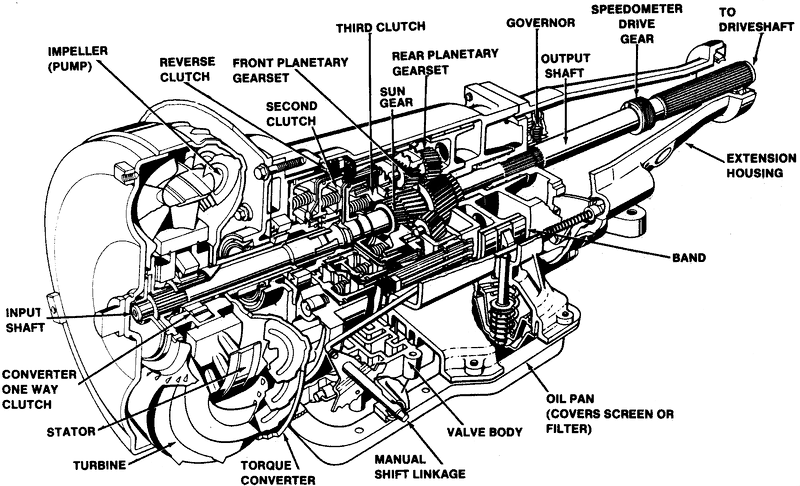TORQUE CONVERTER
Here we discuss about the what is torque converter and how its work. the basic function of torque converter in the Automatic Transmission System. the torque converter takes the place of a clutch in vehicle for power transmission from engine to transmission system. Torque converter directly connects to engine's flex plate( flywheel).like clutch system in conventional manual transmission torque converter is also provide a means by which to connect and disconnect the engine's power to driven load.
Components Torque Converter
There are four components of torque converter;-
1. Impeller
2. Turbine
3. Stator
4. Transmission Fluid
Function of Torque Converter
The turbine is connected to the transmission input shaft and impeller connected with engine flywheel. when engine turns the impeller which impart a force on a transmission fluid. this fluid pressure rotates the turbine and sending a torque to the transmission.
The transmission fluid flows in a loop between the impeller to the turbine. then this coupling suffers from severe churning losses as the fluid returning from the turbine has a component of its velocity that opposes the rotation of the impeller. That is, fluid returning from the turbine works against the impeller's rotation and thus against the engine
The stator sits between the impeller and turbine. Its goal is to
minimize churning losses and to increase torque output by redirecting the fluid
as it returns from the turbine to the impeller. The stator directs the fluid so
that the majority of its velocity is in the direction of the impeller, helping
the impeller move, and thus adding to the torque produced by the motor.
The stator sits on a one-way clutch. It can rotate in one
direction only when the turbine and impeller are moving at approximately the
same speed (like during highway driving). The stator either rotates with the
impeller or not at all. Stators don't always multiply torque, though. It provide more torque when either at standing condition or while accelerating, but not during highway
cruising.
In addition to the one-way clutch in the stator, some torque
converters contain a lock-up clutch whose job it is to lock the turbine with
the torque converter housing so that the turbine and impeller are mechanically
connected. Eliminating the fluid coupling and replacing it with a mechanical
connection ensures that all of the engine's torque is transmitted to the
transmission input shaft
Automatic Transmission Fluid (ATF) Flow Direction
direction of fluid between impeller to turbine
Torque converter uses in automatic transmission system in vehicle. To know more about Automatic Transmission System Click here












